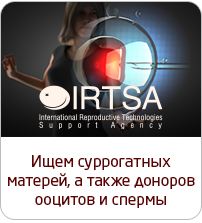Weird science methods of improving fertility
 Today if you’re trying to get pregnant, you might be having a little trouble. Chances are, though, that you’ve got a lot of options to help you on your way to that little bundle of joy. In the past decade, the number of techniques and procedures available to women and men trying to improve their fertility has exploded—especially in the area of in vitro fertilization, a procedure in which sperm and egg meet in a petri dish before they journey together to the uterus. Many of the recent advances in IVF have been about selecting sperm, eggs, and embryos with the greatest chance of creating a successful pregnancy. But researchers and companies are working on a set of more experimental approaches that attempt to improve an embryo’s odds by hacking reproductive biology itself.
Today if you’re trying to get pregnant, you might be having a little trouble. Chances are, though, that you’ve got a lot of options to help you on your way to that little bundle of joy. In the past decade, the number of techniques and procedures available to women and men trying to improve their fertility has exploded—especially in the area of in vitro fertilization, a procedure in which sperm and egg meet in a petri dish before they journey together to the uterus. Many of the recent advances in IVF have been about selecting sperm, eggs, and embryos with the greatest chance of creating a successful pregnancy. But researchers and companies are working on a set of more experimental approaches that attempt to improve an embryo’s odds by hacking reproductive biology itself.
One of these options comes from Massachusetts-based OvaScience, which created a technique to spike women’s eggs with youthful energy. Using this method doctors take young mitochondria from women’s immature egg cells and inject them into their mature eggs—a procedure that theoretically replaces old, worn-out mitochondria and ‘refreshes’ the egg to increase chances of pregnancy. (This is different from the controversial mitochondrial therapy recently approved in in the UK, which prevents genetic disease carried by a mother’s mitochondrial DNA by putting her nuclear DNA in a donor egg carrying healthy mitochondria.)
Recently, OvaScience presented data that suggests between 25 and 53 percent of women who underwent the procedure became pregnant. The company already offers the procedure in a few countries, including the United Arab Emirates, Turkey, and Canada, it hasn’t reported any births yet. And there aren’t any US patients, since the FDA stopped OvaScience from conducting trials in the US in 2013. The agency wanted it to first go through the more rigorous process for new investigational drugs, rather than low-risk, less-regulated human tissue products. OvaScience has confidence in its new technique, though.
Since the first test-tube baby was born in 1978, researchers have figured out what nutrition embryos need, how to inject a single sperm into an egg to fertilize it, the best way to freeze eggs and embryos, and how to test embryos for a number of genetic conditions. But still, the majority of IVF procedures fail, and doctors often don’t know why. The national success rate is around 40 percent for women under 35 (it gets worse as you get older), and the rate fluctuates wildly from clinic to clinic because their protocols are all slightly different. “There’s controversy about the best way to do a lot of these steps,” says Jennifer Kawwass, a fertility specialist at Emory University. That leaves plenty of room for researchers to try weirder and weirder ways to tweak a woman’s fertility.
Another technique doctors might use in the future is called a ‘freeze all’ cycle. Prescribed IVF drugs boost a woman’s hormones to super high levels to encourage eggs to mature. But those extra hormones might also make the endometrium less receptive to an embryo, actually lowering success rates. Researchers are currently testing this theory by freezing the embryos, taking women off the hormones, and waiting until the next cycle, when the endometrium returns to normal.
Some of the other ideas are way kookier-sounding—like scratching the uterine lining to increase chances of pregnancy. A few scientists think doing this could make it easier for an IVF embryo to implant, though no one understands the underlying mechanism (and many people are highly skeptical it works at all). Another experimental technique called in vitro activation has doctors surgically remove parts of the ovary and treat them with enzymes to artificially jump-start egg development in women who’ve stopped ovulating. And then there’s OvaScience. In spite of its regulatory limitations, the mitochondrial transfer could potentially work.
IVF research is a young field and a difficult subject to study, since mice and primates aren’t great proxies for human reproductive biology. The true success rates for different techniques appear only after years of follow-up, aided by the CDC’s National Assisted Reproductive Technology Surveillance System. So the science advances slowly and there’s still a lot of chance in the process.
Based on: wired.com
- The central office of IRTSA Ukraine completely restores work
- How we work during the COVID-19 pandemic
- 1st International Congress on Reproductive Law
- Soon Americans may face a new ethical dilemma
- ‘Friends’ star Jennifer Aniston is pregnant with twins
- Image processing technology can impact the success rates of ivf
- Editing genes of human embryos can became the next big thing in genetics
- Supermodel Tyra Banks undergoes IVF
- Scientists discovered a new, safer way for egg freezing
- French scientists have managed to grow human sperm cells in vitro









